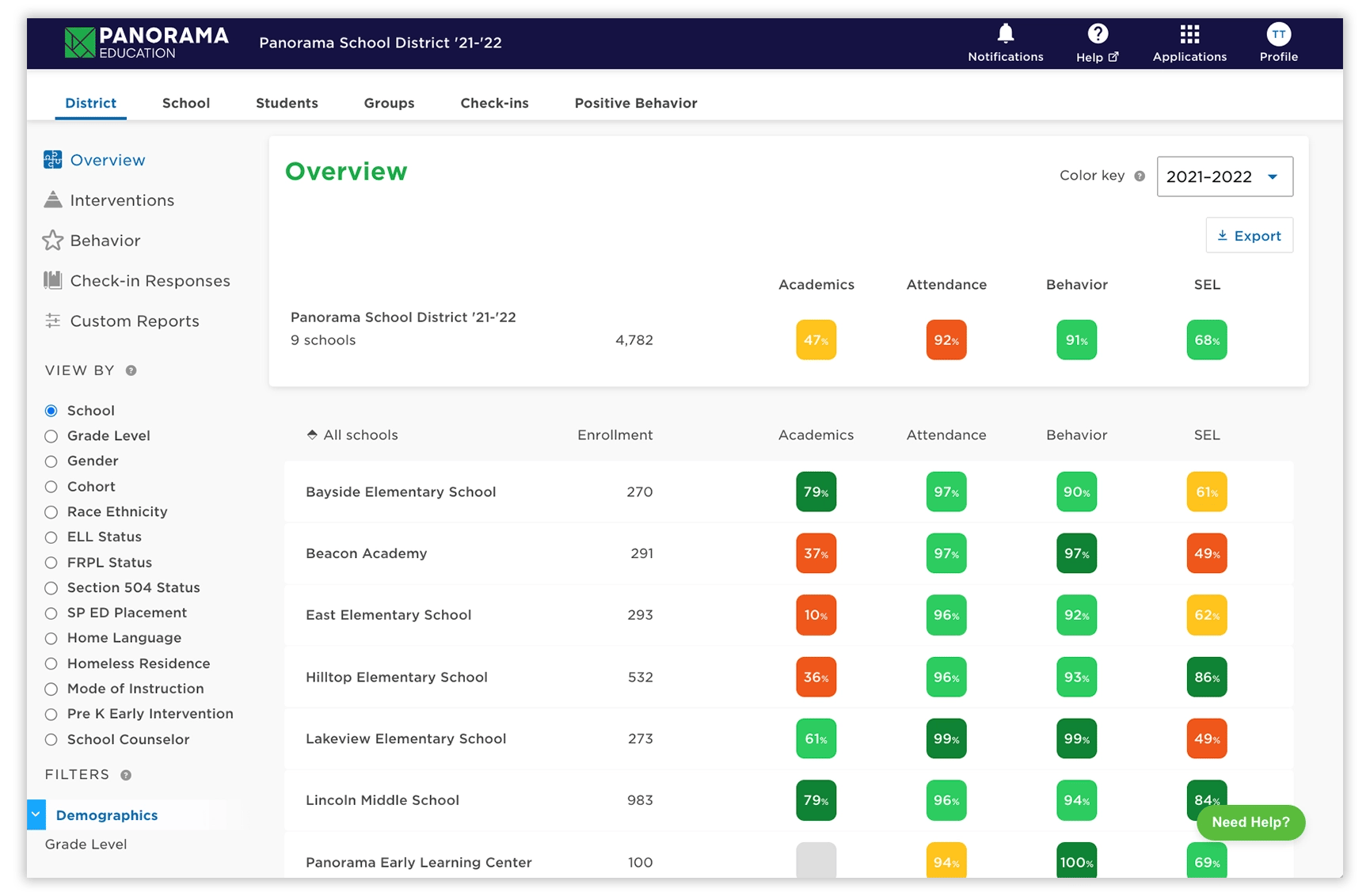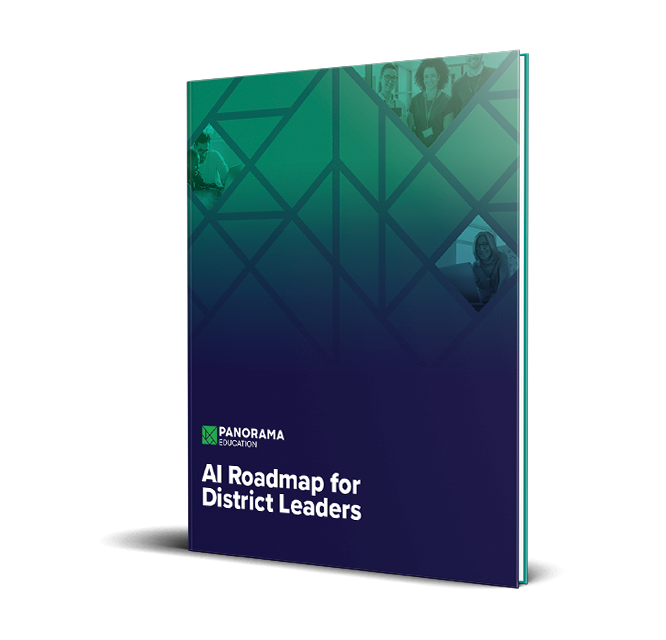Chronic absenteeism has reached alarming levels in U.S. schools. During the 2021-2022 school year, nearly 30% of students were chronically absent, approximately double the pre-pandemic rate. This troubling trend affects not only schools and students but also society at large, with potentially severe long-term consequences if left unaddressed.
Tackling this issue requires a comprehensive approach that considers both in-school and out-of-school factors contributing to chronic absenteeism and truancy. By understanding and addressing the root causes, educators and administrators can develop effective strategies to boost attendance and mitigate the negative effects on student outcomes.
This article provides valuable insights and practical solutions to help you take action in your district to combat chronic absenteeism and improve student attendance. Read on to discover how you can make a positive difference when it comes to this critical issue.
Table of Contents
The Scope of the Chronic Absenteeism Challenge
Root Causes of Chronic Absenteeism
The Short-Term and Long-Term Effects of Chronic Absenteeism
Strategies to Mitigate the Effects of Chronic Absenteeism
Panorama's Role in Addressing the Effects of Chronic Absenteeism
Trust Panorama to Help Boost Your Student Engagement
New Research and Strategies for District Leaders
What Is Chronic Absenteeism?
Chronic absenteeism occurs when a student misses 10% or more of their school days. In a typical 180-day school year, this amounts to 18 days of absence. This definition encompasses all types of absences, including excused, unexcused, and suspensions.
It's important to distinguish between chronic absenteeism and truancy. While chronic absenteeism is a broad term covering all absences, truancy specifically refers to unexcused absences.
In recent years, chronic absenteeism has become an increasingly important metric in education. The Every Student Succeeds Act (ESSA), implemented in the 2018-2019 school year, played a significant role in this shift. ESSA requires schools to develop accountability systems that track crucial data points, including attendance, to enhance student outcomes.
The Scope of the Chronic Absenteeism Challenge
The current extent of chronic absenteeism in U.S. schools is extremely concerning. In the 2023-2024 school year, nearly 15 million students were chronically absent. High school students were particularly affected, with a striking 32% failing to maintain regular attendance.
While chronic absenteeism impacts all students, certain groups face disproportionate challenges, with low-income students, students of color, students with disabilities, and students with English Language Learner (ELL) status being particularly affected.
Geographic location also plays a significant role in absenteeism rates. Some school districts and states report notably high levels of chronic absences, underscoring the need for targeted, community-specific interventions. In 2023, Alaska reported the nation’s worst chronic absenteeism rate at 45%, the District of Columbia came second with 43.6%, followed by New Mexico with 39.2%. This variability emphasizes that effective solutions must be tailored to the unique needs of each community and individual student.
The widespread nature of this problem calls for a comprehensive approach to address the diverse factors contributing to chronic absenteeism across different student groups.
Root Causes of Chronic Absenteeism
Understanding the underlying factors that contribute to chronic absenteeism is the first step towards developing effective solutions. The causes are often complex and interconnected, involving personal, familial, and systemic issues:
- Health challenges (physical and mental): Both physical and mental health conditions can significantly impact attendance. Chronic conditions like asthma or mental health challenges such as anxiety may prevent students from consistently attending school.
- Family responsibilities or challenges: Some students, particularly those from low-income families, may need to stay home to care for younger siblings or work to support their families, resulting in frequent absences.
- Transportation difficulties: Limited access to reliable transportation can make regular school attendance difficult, especially for students in rural areas.
- Housing instability: Homelessness or frequent relocations can disrupt a student's ability to maintain consistent school attendance.
- School climate issues (bullying, lack of engagement): Negative experiences such as bullying or a lack of engaging instruction can discourage students from attending school regularly.
- Academic struggles: Students struggling with challenging curriculum or falling behind may avoid school due to frustration or embarrassment.
- Substance abuse: Personal or familial substance abuse issues can create an unstable home environment, leading to frequent absences.
These root causes can have serious short-term and long-term effects on students' educational outcomes and future prospects. Addressing these factors is essential for developing comprehensive strategies to combat chronic absenteeism.
The Short-Term and Long-Term Effects of Chronic Absenteeism
Chronic absenteeism has profound and far-reaching consequences for students, extending well beyond missed school days. It can hinder the development of critical skills, reduce academic success, and create lasting challenges throughout a student's life.
Here’s how this issue often impacts students:
-
Academic Consequences: A range of studies show school absences negatively impact academic outcomes. Frequent kindergarten absences correlate with lower cognitive skills in early childhood and poorer academic performance at age 15. Consistent absences from kindergarten through 8th grade decrease the chances of pursuing higher education, for example, missing 10 classes in 9th grade reduces college attendance likelihood by 2%.
This discovery prompted an examination of how attendance impacts overall academic performance. The evidence consistently shows that chronically absent students are more likely to: score lower on standardized tests, perform poorly in overall academic achievement, and face suspension in middle school.
-
Social and Behavioral Effect: Chronic absenteeism and truancy often lead to disengagement from studies and disconnection from peers and the school community. This isolation can negatively impact a student's well-being and hinder the development of essential social skills and friendships.
Moreover, classroom dynamics are disrupted when teachers must dedicate extra time to helping chronically absent students catch up, potentially affecting the learning experience for all students.
-
Increased Dropout Risk: Research indicates that chronic absenteeism may be a stronger predictor of dropout rates than test scores. Students with just one year of chronic absenteeism are seven times more likely to drop out of school. This pattern often starts early, with students unable to read proficiently by third grade being four times more likely to drop out of high school.
-
Long-Term Life Outcomes: The effects of chronic absenteeism extend far beyond the classroom. Long-term consequences include: lower lifetime earnings and poorer health outcomes.
These outcomes underscore the critical importance of addressing chronic absenteeism to ensure better futures for all students.
Strategies to Mitigate the Effects of Chronic Absenteeism
Addressing chronic absenteeism is vital for ensuring students' academic and personal success. Here are some key considerations when addressing chronic absenteeism in your district: data-driven approaches, school-based interventions, and family engagement.
Data-Driven Approaches: Implementing the right supports and interventions is crucial to combating chronic absenteeism. However, it's challenging to identify the best supports without data. Platforms like Student Success can support data-based decision-making by making comprehensive student data visible and actionable. Key components of data-driven decision-making to support attendance could include:
- Accurate absence tracking: Maintain precise attendance records to quickly identify at-risk students.
- Early warning systems: Alert staff when students show patterns of absenteeism, enabling timely interventions.
- Trend analysis: Use data to uncover underlying causes of absences and customize interventions to meet specific student needs.
- Survey-based improved school climate initiatives: Surveys identify areas for improvement to create a more welcoming and engaging school environment.
Research-Based Interventions: Another way to address chronic absenteeism is through research-based interventions. Interventions are most effective when targeted to meet the unique needs of each student. Examples of interventions include:
- Nudge letters: Nudge letters inform parents and students about the importance of attendance and highlight missed days.
- Check-In/Check-Out (CICO): CICO can provide daily interactions with a trusted adult to monitor and support student attendance.
- Attendance groups: Form small groups that meet weekly for at least four months. Groups set goals, track progress with a Reward Chart, and participate in activities to boost self-esteem and involvement.
Family Engagement: Schools can't solve absenteeism alone; family involvement is important as well. Strategies for effective family engagement include:
- Educating families about the direct impact of attendance on academic success and long-term outcomes.
- Providing resources and support to help families overcome attendance barriers, such as transportation or health issues.
- Fostering connections between home and school to create a supportive network that promotes consistent attendance.
- Encouraging parental involvement to address issues before they lead to chronic absenteeism.
Panorama's Role in Addressing the Effects of Chronic Absenteeism
Implementing effective strategies to combat chronic absenteeism can be challenging without the right tools. At Panorama, we've developed solutions to help you track and analyze attendance data efficiently, enabling you to support students and address chronic absenteeism. Our suite of products includes:
-
Panorama Student Success: Use Panorama Student Success to triangulate attendance data with academics, life skills, behavior data. See student survey data from Panorama alongside academic data for a more complete picture of students’ strengths and challenges. More deeply understand the factors across school climate and academics that could be leading to chronic absenteeism; then take action with support planning. With Student Success, schools can:
- Identify at-risk students early
- Pinpoint areas requiring intervention
- Make data-driven decisions to improve student outcomes

Panorama Student Success (demo data displayed)
-
Panorama Surveys and Feedback: As the leading K-12 survey platform, Panorama Surveys and Feedback offers district-wide benchmark and pulse surveys. Our survey solution is trusted by top school districts nationwide, with 25% of U.S. public school students using it. Schools value its speed, flexibility, and security for collecting and analyzing crucial feedback. With Surveys, your school or district can:
-
Gather insights from students, families, and staff
- Understand your school's climate, safety, and engagement levels
- Uncover actionable insights to enhance the school environment and address attendance issues
-
%20(1).webp?width=2280&height=1400&name=Product_FeedbackSurveys%20(1)%20(1).webp)
Panorama Student Survey (demo data displayed)
These integrated tools equip schools with the resources and strategies needed to improve attendance and foster a positive, supportive educational environment. By leveraging Panorama's comprehensive solutions, you can take meaningful steps towards reducing chronic absenteeism and enhancing student success.
Trust Panorama to Help Boost Your Student Engagement
Chronic absenteeism presents a significant challenge with wide-ranging consequences for students, families, and schools. The recent surge in absentee rates underscores the urgent need for innovative strategies that address the root causes of this issue.
Take the next step in tackling chronic absenteeism in your school or district. Explore Panorama's comprehensive toolkit today and discover how our solutions can help you create a more engaged, successful student body. Together, we can turn the tide on chronic absenteeism and pave the way for better educational outcomes.
New Research and Strategies for District Leaders
To help you uncover how to address absenteeism in your district, Panorama's Data Science and Applied Research Team completed an extensive study on the state of chronic absenteeism. Using Panorama’s unique national data, we’ve analyzed the complete attendance information for over 7,000 schools and 11 million student records. The full report outlines specific, research-informed strategies that district and school leaders can implement to address some of these root causes of chronic absenteeism.
Download The State of Chronic Absenteeism: What Millions of Students Tell Us About School Climate




